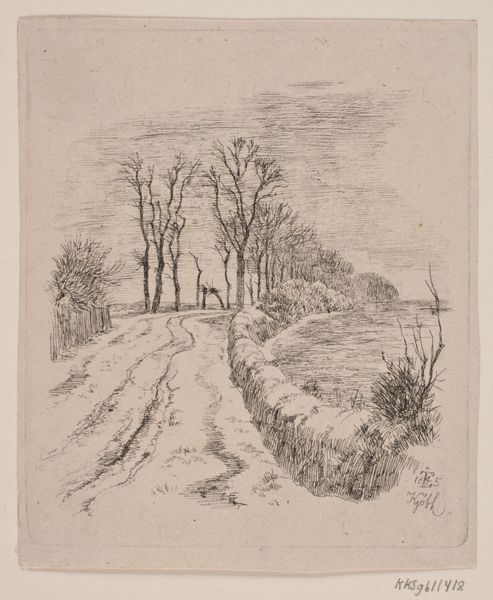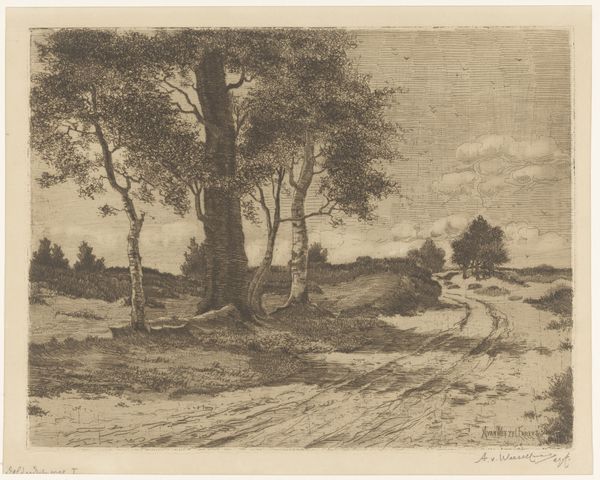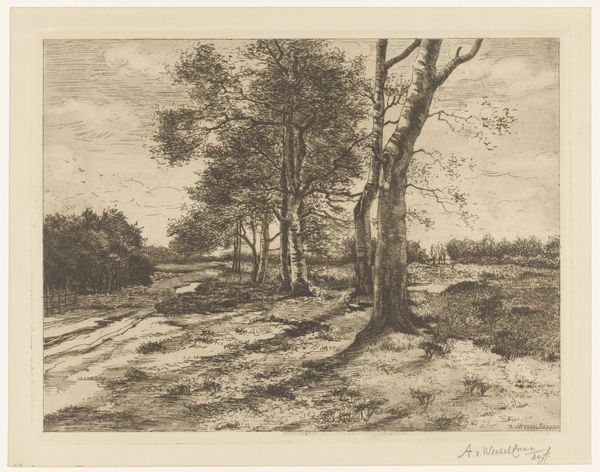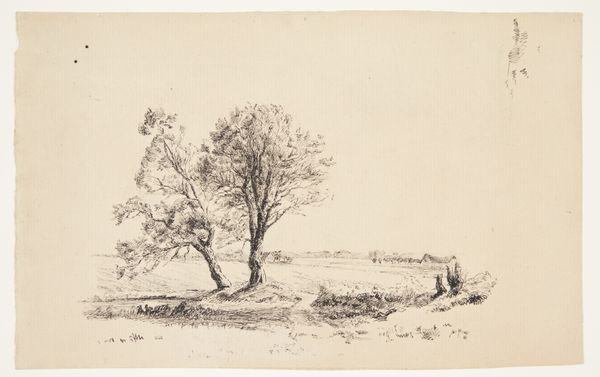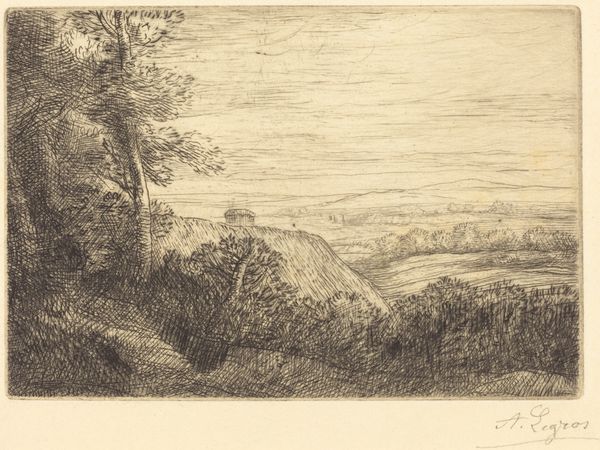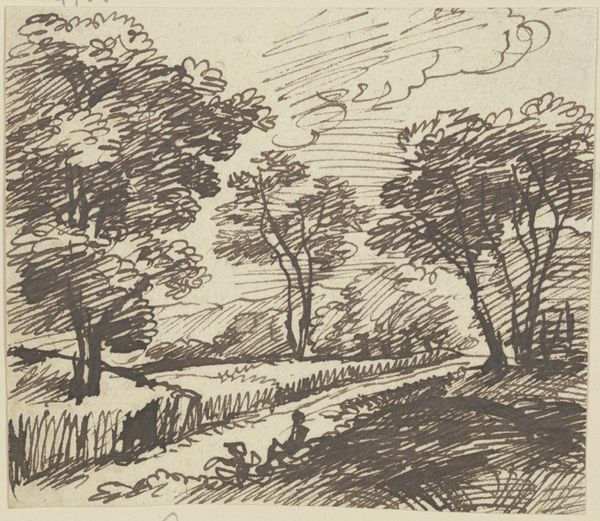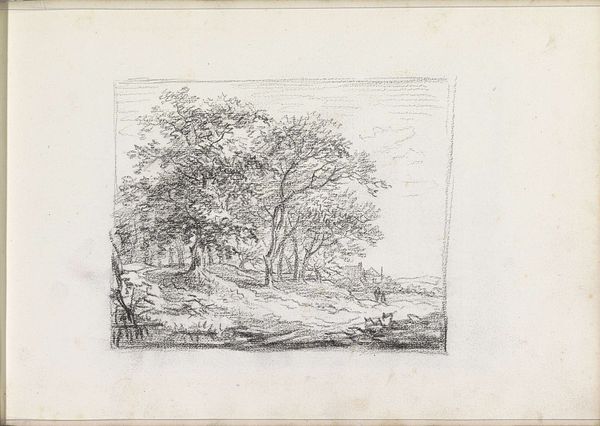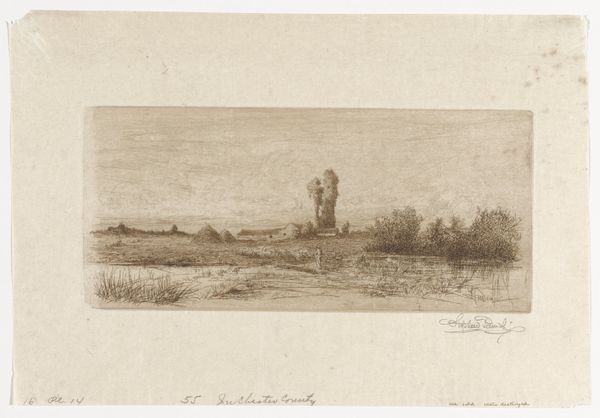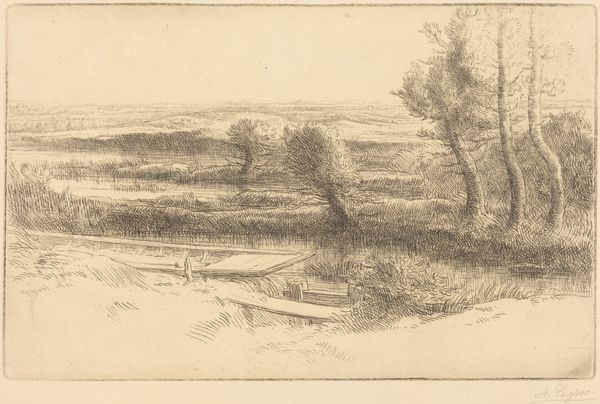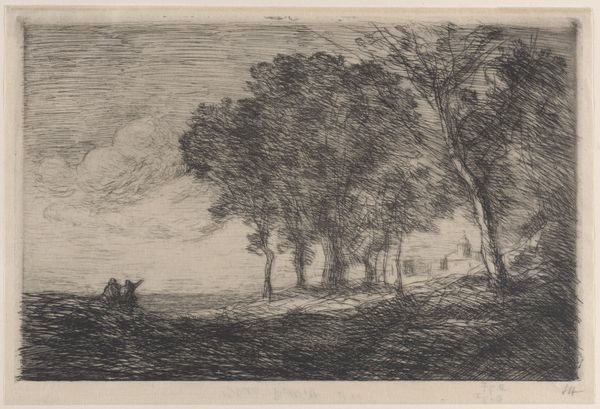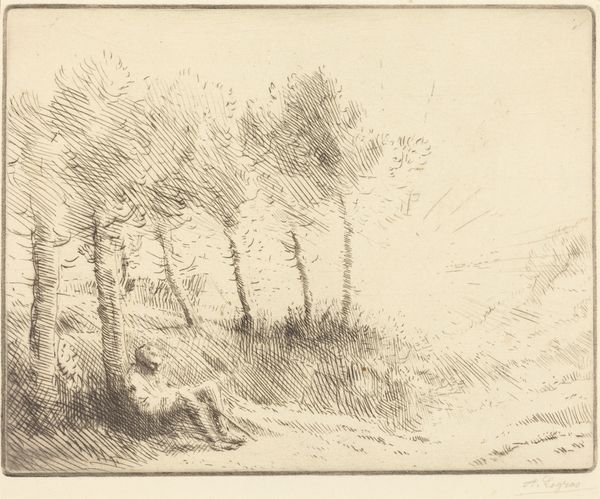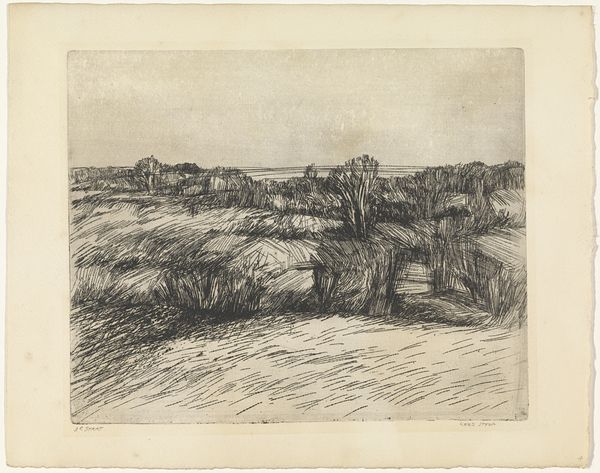
print, etching
# print
#
impressionism
#
etching
#
landscape
#
realism
Copyright: National Gallery of Art: CC0 1.0
Curator: Take a moment to look at Camille Pissarro's 1883 etching, "Paysage avec berger et moutons a Osny (Pontoise)", or Landscape with Shepherd and Sheep at Osny. Editor: My initial feeling is a bit bleak, actually. It's all monochrome and those bare trees certainly don't help. It looks late fall, early winter, a landscape stripped back. Curator: That somber feeling makes sense. The etching perfectly captures the Realist and Impressionist vision of rural life without romanticizing it. Pissarro wasn't afraid to show the sometimes harsh realities of country existence. Editor: Absolutely, and etchings lend themselves so well to that kind of muted expression. The socio-political forces shaping late 19th-century rural life in France were undoubtedly complex. How did those external factors influence his work in this particular area? Curator: Well, Osny, near Pontoise, became a haven for artists escaping the industrialized urban centers. It offered a sense of authenticity but also a subject ripe for portraying social structures. It mirrors, in visual terms, some of the period’s literature focusing on peasant life and labor. Pissarro returned often to Pontoise as the motif allowed for subtle modulations over a longer period of time, rendering light at various hours. Editor: Interesting, and thinking about the visual language—that path leading our eye into the composition; is there a deeper message there? Does it encourage us to question our relationship to this pastoral scene, almost inviting the viewer to wander this particular road of art history, perhaps? Curator: I interpret that pathway differently. I believe it represents the journey of the shepherd, an archetypal figure traversing the earthly realm. The sheep are less animals and more embodiments of the faithful flock under his guidance. The path illustrates their shared destiny and communal experience, linking the symbolic with the agrarian. Editor: So you see more spiritual undertones. Perhaps it’s Pissarro capturing a longing for simpler, more connected ways of living in a rapidly changing society. Either way, it’s interesting that a relatively small etching can elicit such profound ideas about existence. Curator: Exactly. These are all potent dialogues swirling beneath the surface. Art history, like iconography, demands a deeper look beyond the aesthetic surface, which often unveils the multilayered story behind the artwork. Editor: Well, looking again, perhaps it's not bleak but imbued with a particular hope. The hope that art reflects our culture, politics, and psychology—holding a mirror up to both society and soul.
Comments
No comments
Be the first to comment and join the conversation on the ultimate creative platform.
